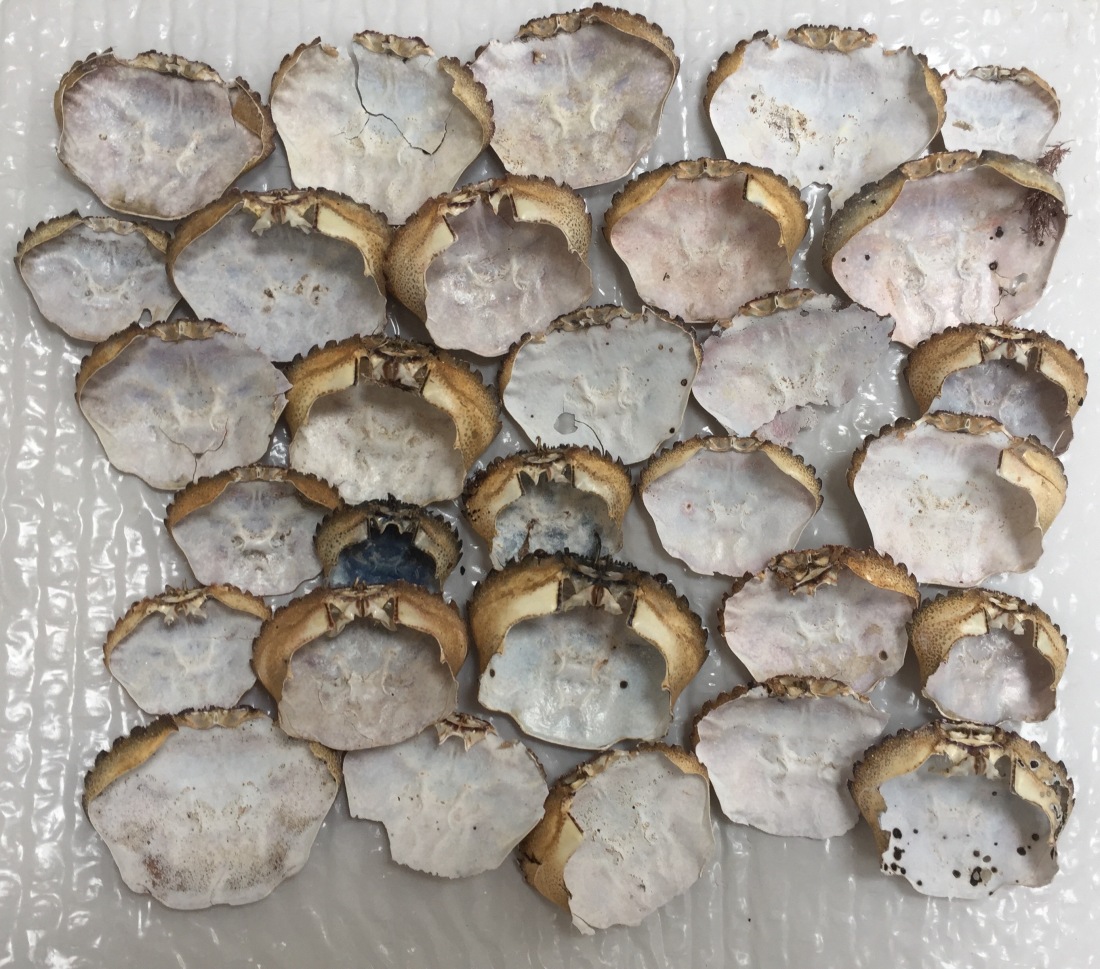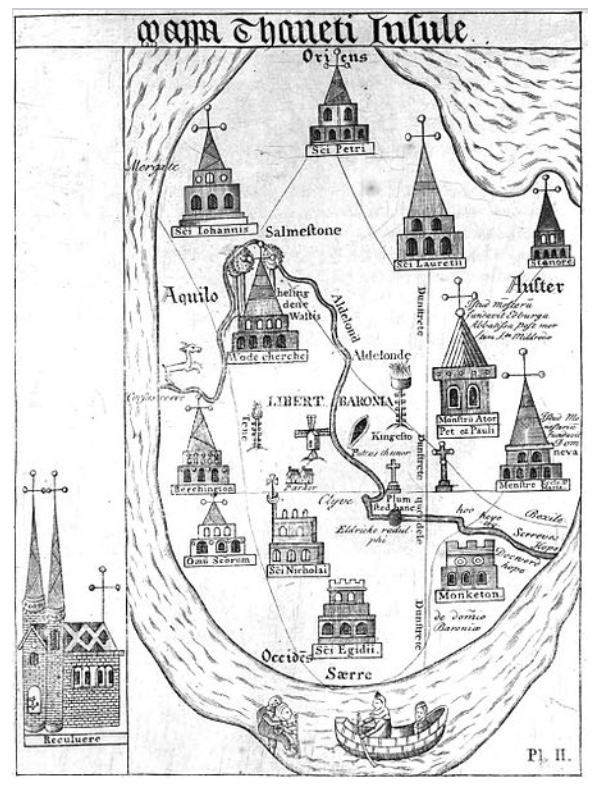
Medieval map of Thanet showing the Cursus Cerve (the course of the deer). When St. Domneva established Minster Abbey in the seventh century, the boundaries of its land were determined by how far her pet hind would run. The land was in lieu of wergild, blood money, offered to her by King Ecgberht of Kent as recompense for the murder of her brothers. The deer set out from Westgate and ran to Minster. This line later became known as St Mildred’s Lynch and was believed to be an ancient ridge, although it may have been created to divide the manors of Monkton and Minster.
And hio ða swa dyde þæt hio þæt wergeld geceas þurh Godes fultum on ðam iglande þe Teneð is nemmed: þæt is þonne hundeahtatig hida landes þe hio ðær æt þæm cyninge onfeong. And hit ða swa gelamp þa se cyning and hio Domne Eafe ærest þæt land geceas, and hi ofer þa ea comon, þa cwæð se cyning to hire hwylcne dæl þæs landes hio onfon wolde hyre broðrum to wergilde. Hio him andsworode and cwæð þæt hio his na maran ne gyrnde þonne hire hind utan ymbe yrnan wolde, þe hire ealne weg beforan arn ðonne hio on rade wæs. Cwæð þæt hire þæt getyðed wære þæt hio swa myceles his onfon sceolde swa seo hind hire gewisede. He ða se cyning hire geandsworode and cwæð þæt he þæt lustlice fægnian wolde. And hio ða hind swa dyde þæt hio him beforan hleapende wæs, and hi hyre æfter filigende wæron, oðþæt hi comon to ðære stowe þe is nu gecwedon Þunores Hlæwe. And he ða se Þunor to ðam cyninge aleat, and he him to cwæð, ‘Leof, hu lange wylt ðu hlystan þyssum dumban nytene, þe hit eal wyle þis land utan beyrnan? Wylt ðu hit eal ðære cwenon syllan?’ And ða sona æfter þyssum wordum se eorðe tohlad.
(Old English source, an eleventh-century text which is edited in M. J. Swanton, ‘A Fragmentary Life of St. Mildred and Other Kentish Royal Saints’, Archæologia Cantiana xci (1975), 15-27).
I am planning to walk a line which I think approximates to the Cursus Cerve- marked with the dotted line on the map below which splits Thanet in two.
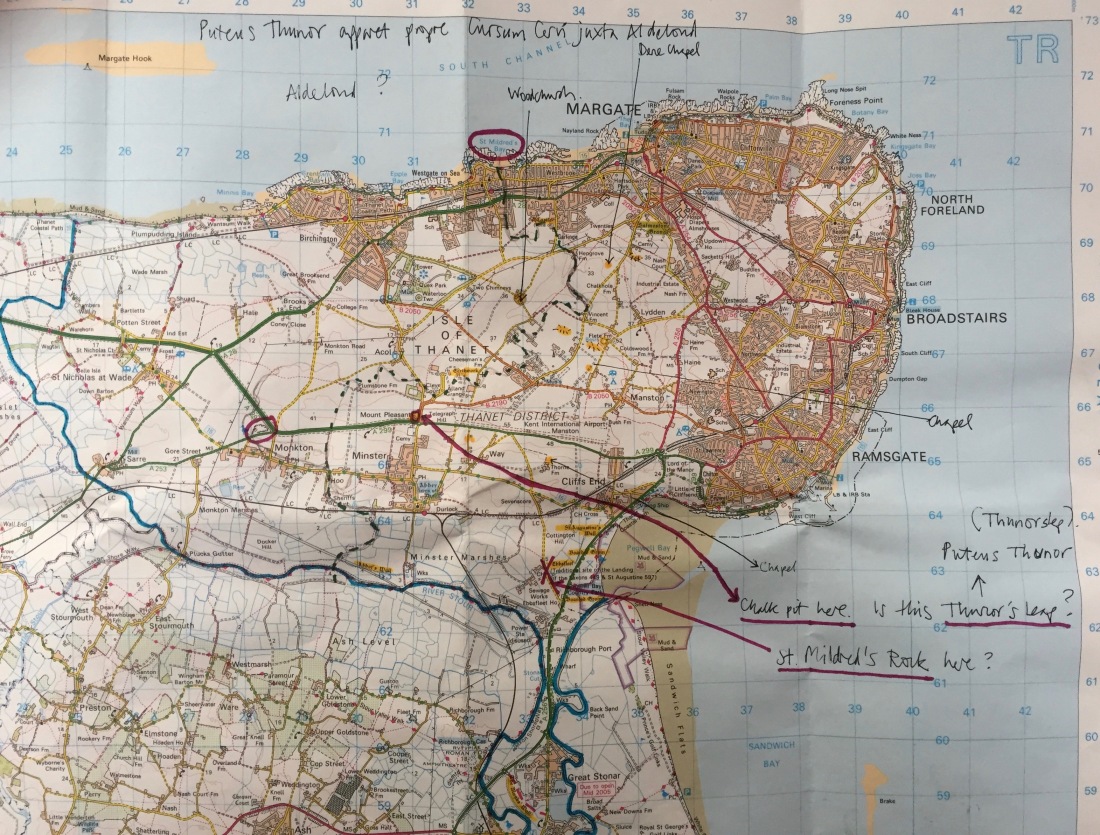
- St. Mildred’s Bay
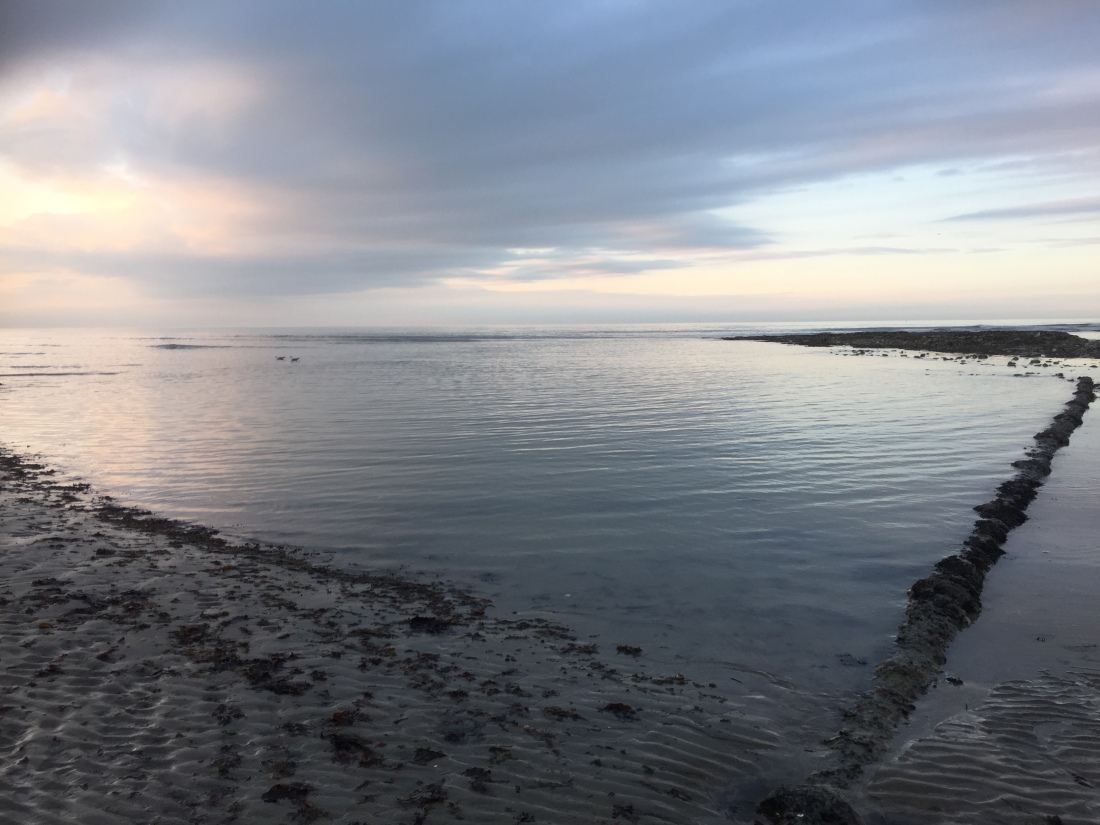
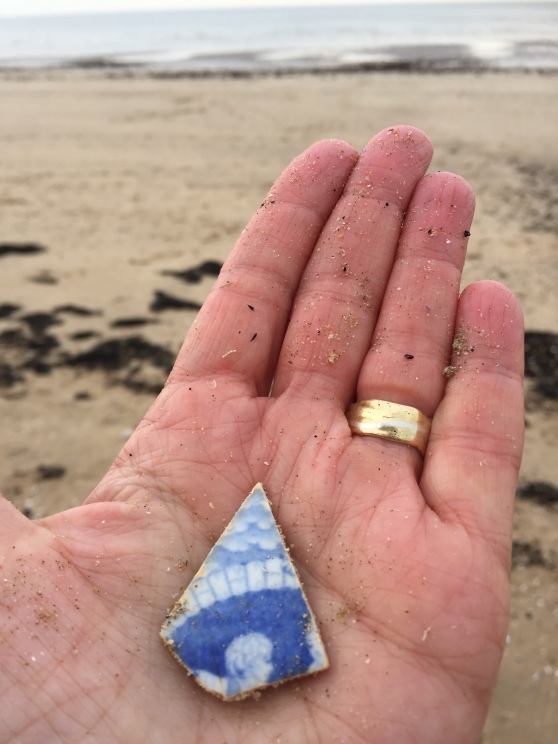
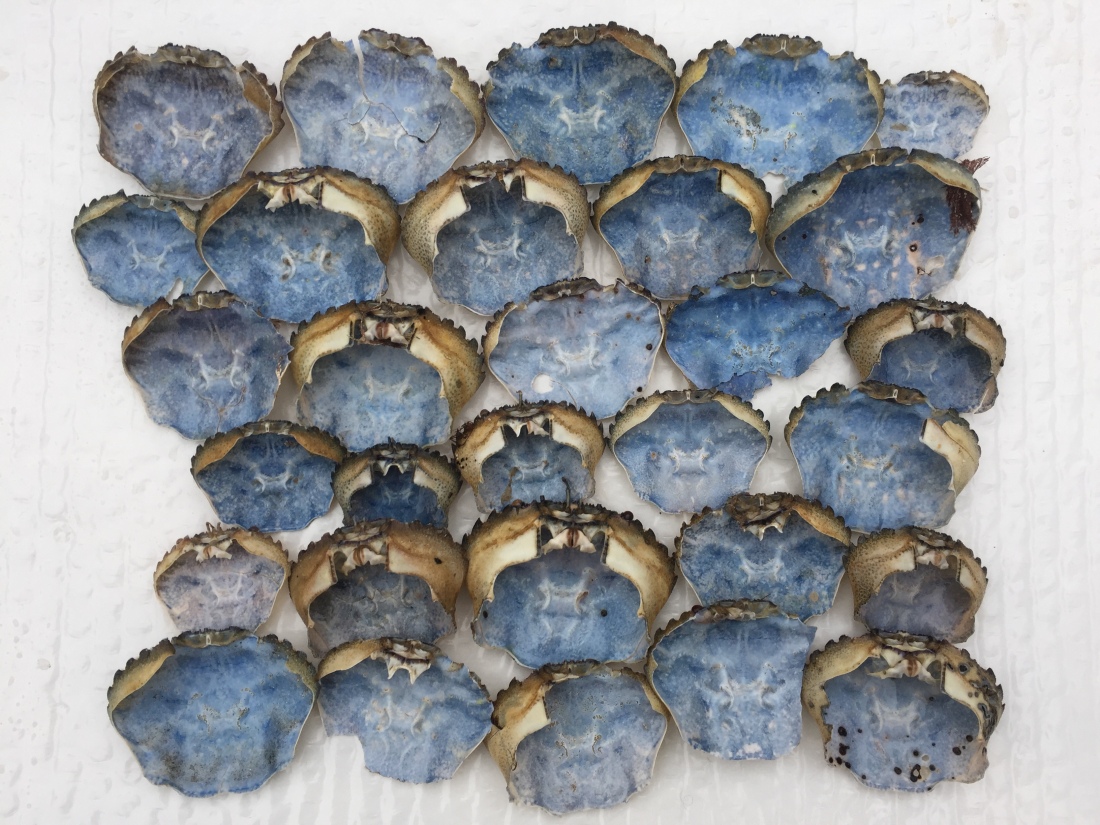
At St. Mildred’s Bay. Walking over the creamy coloured oyster reefs, the occasional shell open and glistening, mouth-like, the rocks like bones. Black winkles clustered on the white flint skin like freckles.
Where would a hind run? Ugly housing fills gaps where cliffs must have crumbled: no deer tracks here.
Amongst banks of seaweed are scattered empty crab shells, mottled blues as if indigo dipped. Celestial blue. The relics of past saintliness .
I find a blue and white shard, a Chinese/ willow pattern design, the cobalt colour of the crabs. Two people depicted on it, I think of Domneva asking King Ecgberht for her pet hind’s run to determine the boundary of her land. Waves descend behind the earnest faces, negotiating territory and redemption.
2. Raising the hind
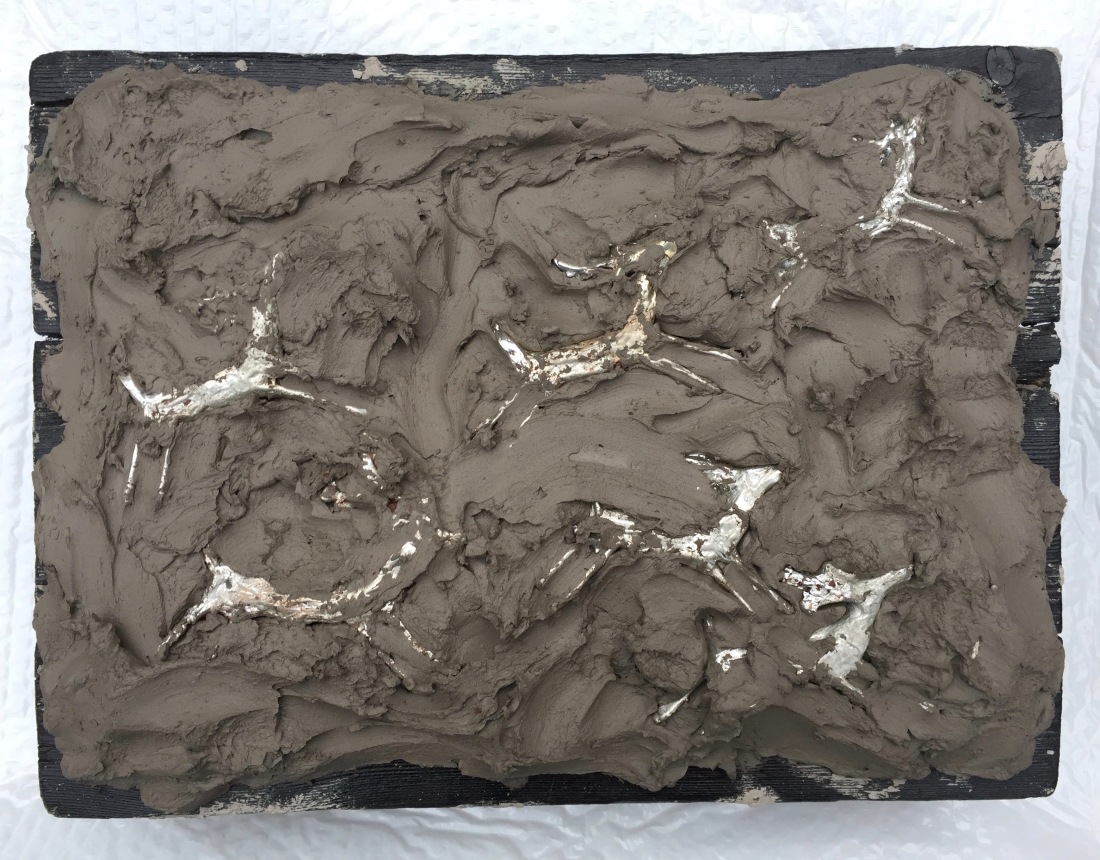
Excavation altar (bird’s eye view): mud and exposed pewter deer “relics”.
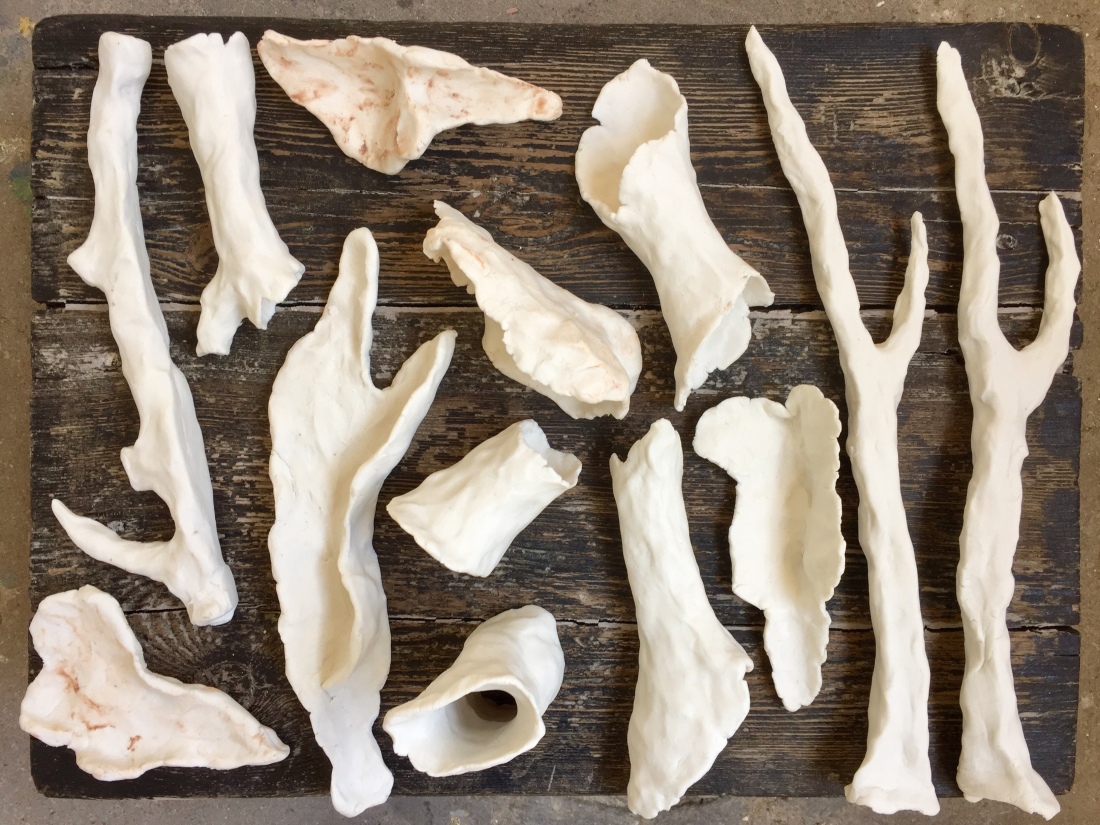 Deer bones and antler fragments (porcelain).
Deer bones and antler fragments (porcelain).
Postscript.
I took the crab shells home, greedy for their colour. I left them for a day and found they had changed-a transformation to purity and whiteness. When adding salt water to them they regained their blue shading, though without the previous intensity. I intend to use these as votives for the walk, a pilgrim’s offerings to Domneva and Mildred.
